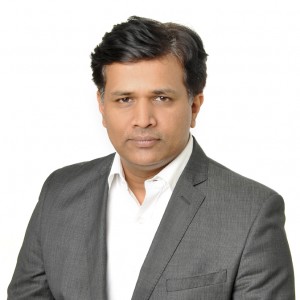

Leading By a Distance
- /
- Articles and Blogposts /
- Leading By a Distance
Who amongst us has not been tracking the Corona virus related numbers – how many have tested positive, how many recovered and how many couldn’t make it, at a country level and state level? There has also been great interest in the number of people being tested and whether the level of testing in India has been sufficient to give us comfort that the pandemic is under control.
We are all ultimately concerned with the number of cases that test positive and what happens thereon – but the numbers that lead us there are the number of people that are tested.
The cases that test positive can be classified as lag results because they are known to us after a time lag. After the tests are conducted, we can actively control the extent of testing. These are known as lead measures – since we can use these to lead our action.
There is no doubt that lag measures i.e. number of cases that test positive are of prime importance. As citizens who are ultimately affected, we should be closely monitoring it. But a more informed citizen should also be interested in the lead measures employed by policy makers in making decisions on the ground.
Lag measures are most frequently tracked in a country. Think about it: sales achieved by a company; GDP of a country; number of persons living under poverty; the pollution levels. They are important because they affect our lives in many ways.
However, while lag measures are important, they don’t necessarily help in driving action. From our previous examples: Knowing your sales number is a historical fact for people who are actually making sales and looking at the next deal. People taking action to drive the lag measures would be better off tracking ‘lead measures’
Lead measures help track steps required to be taken in the future to achieve the lag measures. And the judiciary is no exception.
The whole world seems to know about the 3 crore cases pending in our courts. Every informed citizen also knows that cases take a long time to be disposed off. You would be aware that it takes about 12 to 15 years for cases to move from lower courts to the Supreme Court, if the parties choose to appeal every order or judgment.
The most frequently tracked metric in the judicial reforms discourse is the average number of years taken to dispose off cases and the average number of years cases have been pending. Whether these metrics are adequate to give an overview of a courts functioning is a topic for another day. These are lag metrics – that can be computed only post facto, after the case has been disposed of or after it has become delayed. They inform us after the event.
What would the lead measures be in the case of the judiciary? What would judges and court staff need to work towards to ultimately lead to better disposal and lower pendency?
I argue that the number of effective hearings per day is the single most important lead measure that should be tracked. An effective hearing means the listing of a case for a purpose that makes progress towards its final disposal and its transaction as intended without any undue delay
Ensuring more effective hearings is not as simple as it looks. The presiding officer of the court/judge will have to ensure that the cause list is prepared after considering urgency of cases and the stage at which they are in. The registry staff will need to ensure that the parties and their lawyers are ready for the business as listed to be transacted. Ultimately, the parties and their lawyers will need to co-operate.
More effective hearings would mean that there is more certainty for all involved in the court process – those giving evidence (witnesses, police, doctors, etc), parties who ultimately have to bear the cost of litigation, and lawyers. This may lead to a shorter list of cases to be taken up in a day – but with drastically fewer adjournments. Most importantly it would be mean more effective utilisation of scarce judicial time and resources.
The challenge ahead of us is the ‘how’. How do we schedule cases better so that there are more effective hearings? What steps should the judges take for parties/lawyers who do not transact for the agreed upon purpose? Are there repeat ‘offenders’ in this aspect who need to be handled differently? These are questions worthy of more thought and deliberation in our society. From a distance, of course!
The views expressed in this article are solely those of the author’s and they do not represent the views of DAKSH.

Surya Prakash
RECENT ARTICLES



Mapping Judicial Time: A Two-by-Two Framework for Categorising Listings

Judicial discipline or lack thereof in NCLT and NCLAT

-
Rule of Law ProjectRule of Law Project
-
Access to Justice SurveyAccess to Justice Survey
-
BlogBlog
-
Contact UsContact Us
-
Statistics and ReportsStatistics and Reports
© 2021 DAKSH India. All rights reserved
Powered by Oy Media Solutions
Designed by GGWP Design